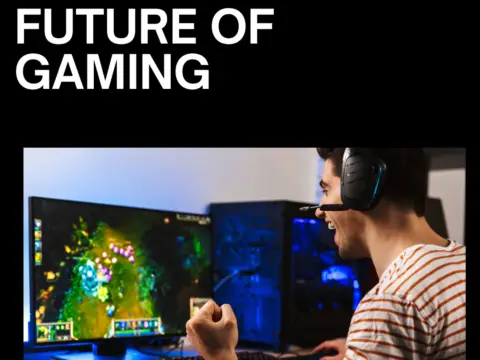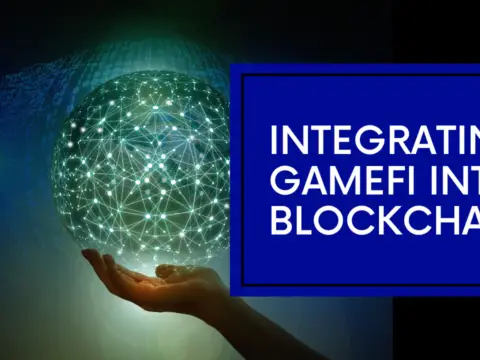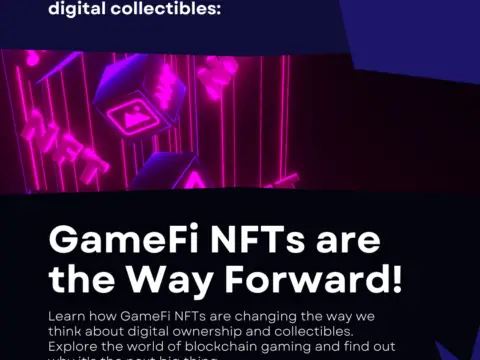Introduction to GameFi
In recent years, the convergence of gaming and decentralized finance (DeFi) has given rise to a new paradigm known as GameFi. This fusion is transforming traditional gaming economies and offering unprecedented opportunities for players, developers, and investors alike.
Understanding GameFi Dynamics
1. What Is GameFi?
- GameFi refers to the integration of decentralized finance principles within the gaming ecosystem. It introduces tokenomics, blockchain, and NFTs (Non-Fungible Tokens) to traditional gaming structures.
2. Tokenization of In-Game Assets:
- GameFi involves the tokenization of in-game assets, making them tradable and ownable as NFTs on blockchain platforms. This adds real-world value to virtual items.
Play-to-Earn Models
1. Earning Rewards Through Gameplay:
- GameFi introduces play-to-earn models where players can earn cryptocurrency or valuable in-game assets by actively participating in the game, leveling up, or achieving milestones.
2. NFTs and Digital Ownership:
- NFTs enable players to have true ownership of their in-game assets. This ownership extends beyond the game, allowing players to trade or sell their items in external markets.
Decentralized Finance in Gaming
1. Leveraging DeFi Protocols:
- Borrowing, Lending, and Staking: GameFi platforms integrate DeFi protocols, allowing players to engage in activities like borrowing, lending, and staking their in-game assets to earn additional rewards.
2. Decentralized Exchanges (DEX):
- Trading In-Game Assets: Decentralized exchanges facilitate the trading of in-game assets, providing liquidity and enabling players to convert their digital assets into fungible tokens or other cryptocurrencies.
GameFi Platforms and Projects
1. Axie Infinity:
- Play-to-Earn Gaming: Axie Infinity pioneered the play-to-earn model, allowing players to earn the native cryptocurrency, AXS, by participating in battles and breeding Axies, the in-game creatures.
2. Decentraland:
- Virtual Real Estate and NFTs: Decentraland combines virtual reality with blockchain, allowing users to buy, sell, and develop virtual real estate. The ownership of virtual land is represented by NFTs.
Challenges and Opportunities
1. Scalability and Network Congestion:
- The scalability of blockchain networks and potential congestion can impact the seamless integration of GameFi. Ongoing technological developments aim to address these challenges.
2. Regulatory Landscape:
- The evolving regulatory landscape poses challenges for GameFi platforms. Regulatory clarity and compliance efforts are crucial for the sustained growth of the sector.
Community Engagement and Governance
1. Community-Led Development:
- Many GameFi projects incorporate governance tokens, allowing players to participate in decision-making processes. This community-led approach fosters engagement and decentralization.
2. Incentivizing Development:
- GameFi platforms often allocate tokens to developers as incentives for creating engaging gameplay, virtual assets, and features that contribute to the ecosystem’s growth.
Future Trends and Innovations
1. Metaverse Integration:
- Expanding Virtual Worlds: GameFi is moving toward greater integration with the metaverse, creating expansive virtual worlds where players can explore, interact, and earn rewards in a seamless digital environment.
2. Interoperability Among Games:
- Cross-Game Asset Utilization: The future of GameFi may involve interoperability, allowing players to use their in-game assets across different games and platforms, creating a unified gaming economy.
Conclusion
GameFi represents a groundbreaking shift in the gaming landscape, providing players with new opportunities to earn, trade, and truly own their in-game assets. As the sector continues to evolve, the fusion of gaming and decentralized finance is poised to redefine how we perceive, play, and engage with digital games, creating a dynamic and immersive gaming economy.



